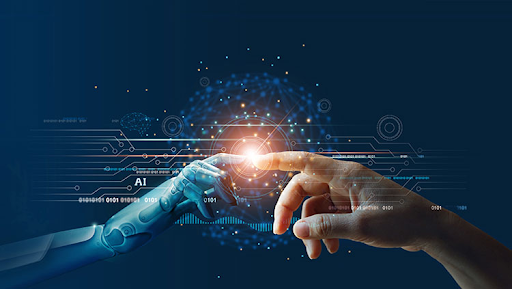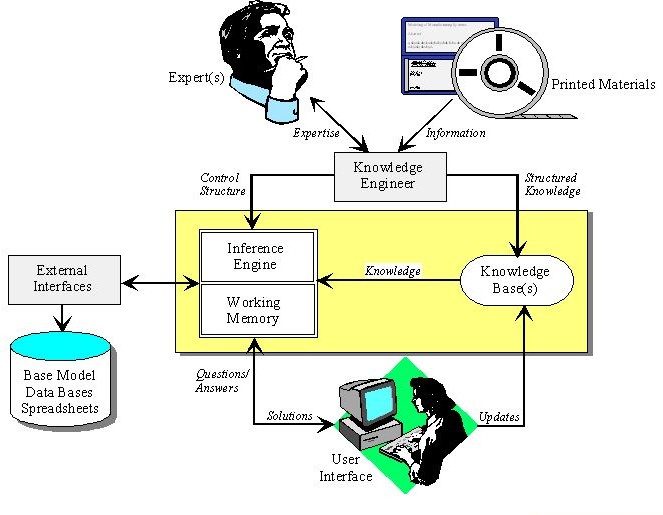
We must consider many issues when creating artificial intelligence systems. These include human dignity and explainability. In order to create ethical AI systems, it is essential that we first understand what constitutes "right" and "wrong" actions. Then, we need to train our AI so that they think ethically. Then, we must develop operationalization methods that avoid bias and allow the AI to make decisions based on fact, not irrationality or prejudice.
Transparency
There are many different approaches to transparency in ethical artificial intelligence. Some see transparency in AI as a way to make better decision making. Others advocate a more non-discriminatory approach that aims to minimize adverse selection and moral hazard. Ultimately, transparency in AI allows us to foster trust and accountability and support greater autonomy. This approach is also beneficial to our ethical goals and values. These are just a few of the many benefits that transparency can bring to ethical artificial intelligence.
Transparency requires that system designers be open to all stakeholder requests. The system must be transparent and should respond as quickly as possible to legitimate questions and individual cases. Transparency may be seen as a real-time property but it could also be a traceability of historical events. This means that when AI systems are created, transparency must be a key feature of the design process. For example, systems should provide detailed reports to help with incident investigation.

Explainability
AI has a number of technical capabilities and advantages that can contribute to immediate ethical benefits. According to the International Risk Governance Center, AI is capable of analyzing large amounts data and linking data sources to produce outcomes that span domains and geographical borders. AI can be consistent and objective, which is not always predictable. It can also free humans from repetitive tasks. AI can help us gain an improved understanding of the world around.
A principle of justice demands equal access for all to medical advancement. This principle is violated by certain medical AI systems. For instance, Obermeyer et al. Obermeyer et al. reported that an AI-based medical system discriminated versus people of color. Explainability can find important characteristics in a model that may indicate bias. This way, Explainability can alert relevant stakeholder groups of bias risks and consequences. It can recognize potential biases of AI models and prevent them becoming a problem.
Traceability
To ensure traceability of a machine-learning model, it is important to describe the data that it is using. It is possible to do this by creating an ontology that describes the phenomena observed and the context from which they were learned. The process of training and transforming the data must also be described in a traceable manner. It is not enough to use an ontology. It also requires a framework of data mining, data science, and data analytics.
Traceability is vital in order to make sure that decisions made by a company are transparent and trustworthy. Organizations must be able to understand the process of developing an AI system, and can explain the decision rules and methods used. The essence of traceability is transparency throughout the entire process. This can be done by using "governance", which is a framework.

Human dignity
A lot of ethical AI debates have been focused on AI’s potential to eradicate jobs and damage the environment. While many of these concerns are quaint and predictably wrong, others are very relevant. Think of the future impact of digital technology on human labor: it will eliminate the industries of photographic film, cassette tapes, and vinyl records. Imagine how driving your car will alter the landscape. And, of course, we must be concerned with our own personal dignity.
The European Group on Ethics in Science and New Technologies recommends a global rethinking on values in digital society. It suggests that human dignity should be considered a central part of how autonomous system interact with human beings. AI must respect and value people and give them the power to control the information and decisions made by the systems. AI must be a positive force for creating a better planet.
FAQ
AI is it good?
AI is seen both positively and negatively. AI allows us do more things in a shorter time than ever before. It is no longer necessary to spend hours creating programs that do tasks like word processing or spreadsheets. Instead, we ask our computers for these functions.
On the negative side, people fear that AI will replace humans. Many believe that robots could eventually be smarter than their creators. This means that they may start taking over jobs.
What can AI be used for today?
Artificial intelligence (AI), a general term, refers to machine learning, natural languages processing, robots, neural networks and expert systems. It's also called smart machines.
Alan Turing created the first computer program in 1950. He was curious about whether computers could think. He proposed an artificial intelligence test in his paper, "Computing Machinery and Intelligence." The test asks if a computer program can carry on a conversation with a human.
John McCarthy, who introduced artificial intelligence in 1956, coined the term "artificial Intelligence" in his article "Artificial Intelligence".
Many types of AI-based technologies are available today. Some are easy and simple to use while others can be more difficult to implement. These include voice recognition software and self-driving cars.
There are two types of AI, rule-based or statistical. Rule-based relies on logic to make decision. An example of this is a bank account balance. It would be calculated according to rules like: $10 minimum withdraw $5. Otherwise, deposit $1. Statistical uses statistics to make decisions. A weather forecast might use historical data to predict the future.
Is AI the only technology that is capable of competing with it?
Yes, but this is still not the case. Many technologies have been developed to solve specific problems. But none of them are as fast or accurate as AI.
What is the future role of AI?
Artificial intelligence (AI), which is the future of artificial intelligence, does not rely on building machines smarter than humans. It focuses instead on creating systems that learn and improve from experience.
So, in other words, we must build machines that learn how learn.
This would mean developing algorithms that could teach each other by example.
You should also think about the possibility of creating your own learning algorithms.
The most important thing here is ensuring they're flexible enough to adapt to any situation.
What's the status of the AI Industry?
The AI industry is growing at an unprecedented rate. There will be 50 billion internet-connected devices by 2020, it is estimated. This will enable us to all access AI technology through our smartphones, tablets and laptops.
This means that businesses must adapt to the changing market in order stay competitive. If they don’t, they run the risk of losing customers and clients to companies who do.
It is up to you to decide what type of business model you would use in order take advantage of these potential opportunities. Could you set up a platform for people to upload their data, and share it with other users. Or perhaps you would offer services such as image recognition or voice recognition?
Whatever you decide to do in life, you should think carefully about how it could affect your competitive position. You won't always win, but if you play your cards right and keep innovating, you may win big time!
Statistics
- Additionally, keeping in mind the current crisis, the AI is designed in a manner where it reduces the carbon footprint by 20-40%. (analyticsinsight.net)
- More than 70 percent of users claim they book trips on their phones, review travel tips, and research local landmarks and restaurants. (builtin.com)
- While all of it is still what seems like a far way off, the future of this technology presents a Catch-22, able to solve the world's problems and likely to power all the A.I. systems on earth, but also incredibly dangerous in the wrong hands. (forbes.com)
- The company's AI team trained an image recognition model to 85 percent accuracy using billions of public Instagram photos tagged with hashtags. (builtin.com)
- In 2019, AI adoption among large companies increased by 47% compared to 2018, according to the latest Artificial IntelligenceIndex report. (marsner.com)
External Links
How To
How to Set Up Amazon Echo Dot
Amazon Echo Dot, a small device, connects to your Wi Fi network. It allows you to use voice commands for smart home devices such as lights, fans, thermostats, and more. To listen to music, news and sports scores, all you have to do is say "Alexa". You can ask questions, make phone calls, send texts, add calendar events, play video games, read the news and get driving directions. You can also order food from nearby restaurants. It works with any Bluetooth speaker or headphones (sold separately), so you can listen to music throughout your house without wires.
You can connect your Alexa-enabled device to your TV via an HDMI cable or wireless adapter. One wireless adapter is required for each TV to allow you to use your Echo Dot on multiple TVs. You can pair multiple Echos simultaneously, so they work together even when they aren't physically next to each other.
To set up your Echo Dot, follow these steps:
-
Turn off your Echo Dot.
-
The Echo Dot's Ethernet port allows you to connect it to your Wi Fi router. Make sure the power switch is turned off.
-
Open the Alexa App on your smartphone or tablet.
-
Choose Echo Dot from the available devices.
-
Select Add a new device.
-
Choose Echo Dot from the drop-down menu.
-
Follow the on-screen instructions.
-
When prompted, enter the name you want to give to your Echo Dot.
-
Tap Allow access.
-
Wait until Echo Dot has connected successfully to your Wi Fi.
-
For all Echo Dots, repeat this process.
-
You can enjoy hands-free convenience